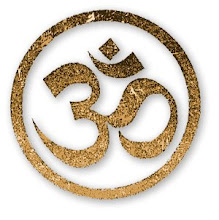Meditation : an enrichment to your soulWhile a meditative state is the natural outcome of yoga and the spiritual benefit of meditation is supreme bliss or enlightenment, these words are unlikely to be understood by many.
However, progress towards meditation and meditative techniques have several benefits at the gross body or material level:
Improvement of body luster and general health-When your mind focuses on a particular part of the body, the blood flow to that part increases and cells receive more oxygen and other nutrients in abundance. Today, many of the film stars and fashion models include meditation in their daily regimen.
Improvement in concentration - Many of the athletes and sports professionals regularly employ meditation methods. Studies have found a direct correlation between concentration exercises (meditation) and the performance level of sports professionals. Meditation strengthens the mind, it comes under control and is able to provide effective guidance to the physical body to effectively execute all its projects. psychological exercise are a powerful way of improving concentration and improving mental strength.
Health benefits of Meditation:Though meditation is usually recognized as a largely spiritual practice, it also has many health benefits. The yoga and meditation techniques are being implemented in management of life threatening diseases; in transformation of molecular and genetic structure; in reversal of mental illnesses, in accelerated learning programs, in perceptions and communications beyond the physical, in solving problems and atomic and nuclear physics; in gaining better ecological understanding; in management of lifestyle and future world problems. Some benefits of meditation are:
It lowers oxygen consumption.
It decreases respiratory rate.
It increases blood flow and slows the heart rate.
Increases exercise tolerance in heart patients.
Leads to a deeper level of relaxation.
Good for people with high blood pressure as it brings the B.P. to normal.
Reduces anxiety attacks by lowering the levels of blood lactate.
Decreases muscle tension (any pain due to tension) and headaches.
Builds self-confidence.
It increases serotonin production which influences mood and behaviour. Low levels of serotonin are associated with depression, obesity, insomnia and headaches.
Helps in chronic diseases like allergies , arthritis etc.
Reduces Pre- menstrual Syndrome.
Helps in post-operative healing.
Enhances the immune system. Research has revealed that meditation increases activity of 'natural-killer cells', which kill bacteria and cancer cells.
Also reduces activity of viruses and emotional distress.
Benefits of meditation on Women's health and Pregnancy:
Identity of your own - besides daughter, wife, mother etc.-Women begin life as someone's daughter, and then someone's lover, wife, someone's mother. Yes, but who am I- who am I really? Not only does a woman need an understanding of her body but also needs to connect with the essence of her true self. A true self, which is an identity beyond everyday change- beyond gender, beyond fluctuations of hormones, beyond family expectations and other superimposed personality patterns. Discovering this true self is not as easy. Just when you know who you are , it all changes again.The process of self discovery involves, stripping off false layers of identity, going back through all the conditionings , realizing- "I am not that, and not that, and not that", an emptiness out of which arises the realization - "Ah ha! I am that".The place for this self discovery is not the psychiatrist's couch, the matrimonial bed, the mother's group, or even a yoga retreat, but within your own private meditation times.
Resolve Phobias -Meditation can help to resolve the deepest of neuroses, fears and conflict which play their part in causing stress and ill health.
For mothers-to-be -Meditation puts mothers in tune with their babies. Manta Japa is especially appropriate for pregnant women. [ See box Mantra Japa for pregnant women ] After birth, daily meditation becomes a precious time to refocus and make sense of the many new thoughts and feelings which can be running through your mind, brought about by the events of childbirth and new motherhood.













 Sit upon the heels, keep the trunk, neck and head straight. Keep the knees together with the palms of the hands resting upon the knees, or with the right hand resting in the left hand upon the lap.
Sit upon the heels, keep the trunk, neck and head straight. Keep the knees together with the palms of the hands resting upon the knees, or with the right hand resting in the left hand upon the lap.


